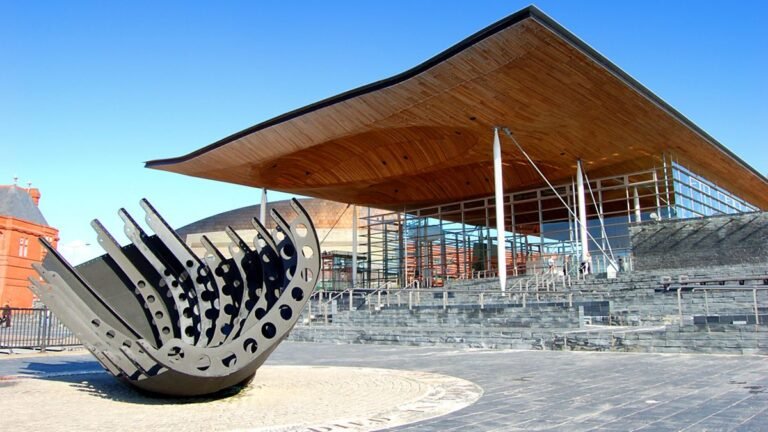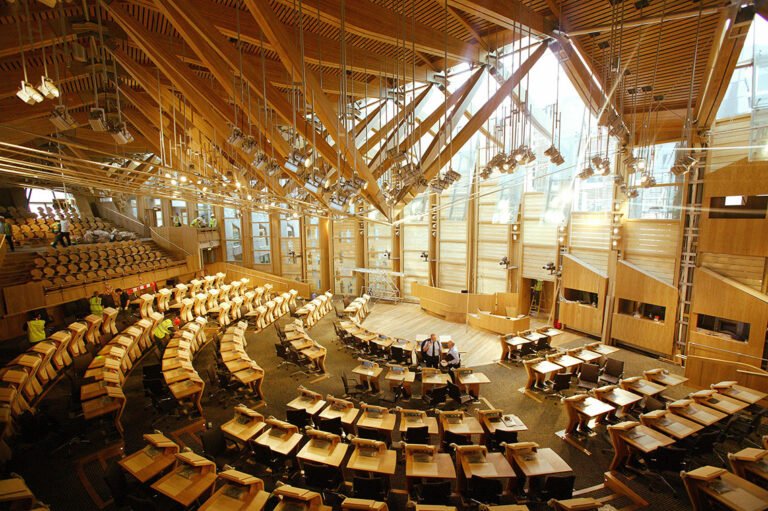The Post-War Consensus shaped modern Britain. It was a political agreement among major parties.
This consensus emerged after World War II, as leaders sought stability and growth. The policies focused on welfare, nationalization, and economic planning. These ideas defined British politics for decades, impacting society deeply. Today, understanding this consensus helps us grasp the roots of contemporary political debates.
It highlights the importance of cooperation in shaping a nation’s future. Dive into this fascinating period to see how it influenced modern governance and social policies. Discover the key elements that made the Post-War Consensus a cornerstone of British political history. Learn how it set the stage for future reforms and challenges in the ever-evolving landscape of governance.
Origins Of Post-war Consensus
The Post-War Consensus emerged after World War II in Britain. This political agreement shaped the country’s governance for several decades. It involved cooperation between the major political parties. They worked together to rebuild the nation. Understanding its origins gives insight into modern political dynamics.
Historical Context
World War II left Britain in turmoil. Cities were damaged, and the economy was weak. People needed stability and rebuilding. During this period, the government faced many challenges. There was a need for a united approach to recovery. This context set the stage for the Post-War Consensus.
Consensus aimed to create social welfare systems. It focused on nationalization of key industries. Leaders sought to ensure employment and education for all. These goals addressed the immediate needs of the population. The focus was on unity and cooperation for the greater good.
Key Influencers
Several figures played a pivotal role in shaping the consensus. Clement Attlee, the Labour Prime Minister, was central. His vision included welfare and public ownership. He believed in social equality and economic stability.
Winston Churchill, despite being conservative, supported consensus ideals. He understood the need for cooperative governance. His leadership during the war influenced post-war policies. These leaders, among others, set the foundation for consensus.
Trade unions also had significant influence. They advocated for worker rights and protections. Their push for fair wages was a key component. The unions ensured that workers’ voices were heard.
This collaboration among leaders and organizations formed the consensus. It was a collective effort to rebuild and stabilize Britain. This agreement shaped political actions for years to come.
Economic Policies
Post-War Consensus marked a period of economic rebuilding in Britain. The government adopted policies to stabilize and grow the economy. This approach aimed at ensuring prosperity and social welfare for all.
Welfare State Emergence
The welfare state emerged to support citizens after the war. It provided healthcare, education, and social security. The government wanted to create a safety net for the population. This system reduced poverty and improved living standards. Everyone had access to basic services, regardless of income.
Nationalization Of Industries
The government took control of key industries. This included coal, steel, and railways. Nationalization aimed to boost efficiency and fairness. The state managed resources to serve the public interest. This approach sought to prevent monopolies and ensure fair prices. It was a major shift in how industries operated.
Social Reforms
Post-War Consensus reshaped social reforms in Britain. It fostered welfare state expansion and universal healthcare. This era aimed for equal opportunity, ensuring stability and growth for all citizens.
In the wake of World War II, the desire for change and improvement was palpable across nations. Social reforms became a beacon of hope for many, promising a better future. These reforms were crucial in shaping modern society, creating avenues for healthcare advancements and an educational system overhaul. You might wonder how these changes impact your daily life. The answer lies in the undeniable benefits they ushered in, transforming societal structures and personal well-being.
Healthcare Advancements
Imagine a world where healthcare is a luxury only a few can afford. Post-war consensus aimed to change that narrative. Governments introduced measures to make healthcare accessible to all.
The creation of national health services in various countries was a pivotal moment. It ensured that everyone, irrespective of social status, could receive medical care. This shift in policy reduced mortality rates and improved overall public health.
Have you noticed how healthcare systems now emphasize prevention? This was one of the key advancements during that era. By focusing on vaccinations and regular check-ups, diseases were controlled more effectively. These efforts laid the foundation for the sophisticated healthcare systems we benefit from today.
Education System Overhaul
The overhaul of the education system was another significant aspect of social reforms. Education was no longer a privilege but a right for every child. This transition was vital for creating opportunities and fostering equality.
Governments invested heavily in building schools and training teachers. The aim was to ensure that every child had access to quality education. This change not only increased literacy rates but also empowered individuals to break free from poverty.
You might wonder about the relevance of these changes today. The emphasis on equal education opportunities continues to inspire policies and programs globally. It’s about creating a society where knowledge is power, accessible to everyone.
Consider how these reforms affect you personally. They offer the possibility for better healthcare and education, improving your quality of life. As you reflect on these advancements, ask yourself: How can you contribute to further social progress?
Political Landscape
The post-war era was a transformative time in the political landscape of many nations. After the devastation of World War II, countries sought stability and recovery, leading to the emergence of what is known as the Post-War Consensus. This period was marked by significant political cooperation and unity, setting the stage for a new era of governance. As you delve into the political landscape of this time, you’ll find intriguing shifts and alliances that shaped the future.
Bipartisan Agreements
One of the most remarkable aspects of the post-war political landscape was the prevalence of bipartisan agreements. Political parties, often at odds, found common ground in the pursuit of national recovery and social welfare. This cooperation led to substantial policy changes, including the establishment of healthcare systems and social safety nets.
Consider how political rivals today might benefit from prioritizing the common good over party agendas. When parties set aside differences to address critical issues, the result can be transformative. Could this approach be the key to overcoming today’s divisive political climate?
Role Of Political Parties
During the Post-War Consensus, political parties played a pivotal role in shaping government policies. They were instrumental in promoting economic growth, reducing inequality, and ensuring social welfare. Parties focused on practical solutions to rebuild and stabilize economies ravaged by war.
Reflect on how political parties can be more effective in achieving their goals. By learning from the collaborative efforts of the past, parties today might find innovative ways to address modern challenges. How can today’s political leaders draw inspiration from the consensus-driven strategies of the post-war era?
Understanding the dynamics of this era might encourage you to think critically about the role of political parties in your own country. How can they adapt lessons from history to tackle today’s issues with creativity and cooperation?
International Relations
The Post-War Consensus reshaped international relations significantly. Countries sought peace and stability. They aimed to prevent another global conflict. Nations recognized the need for cooperation. This era saw significant diplomatic efforts. The focus was on rebuilding and collaboration. A new world order started to take shape. International relations became a priority for many governments.
Alliances And Treaties
Many alliances and treaties were formed during this period. NATO emerged as a key military alliance. It united Western countries under a common defense pact. The United Nations became a platform for diplomacy. It aimed to prevent wars and promote peace. The Warsaw Pact was established by Eastern Bloc countries. It countered NATO’s influence in Europe. These alliances defined global military strategies.
Other treaties focused on nuclear arms control. The Non-Proliferation Treaty aimed to stop nuclear weapon spread. SALT agreements between the US and USSR limited nuclear arsenals. These efforts highlighted a mutual desire for stability. Alliances and treaties played crucial roles in shaping international politics. They influenced global power dynamics for decades.
Impact On Global Politics
Post-war consensus impacted global politics deeply. It led to a bipolar world order. The US and USSR emerged as superpowers. This created a divide between East and West. The Cold War influenced international relations for years. Many countries were forced to choose sides. This tension affected global diplomacy and trade.
Decolonization also accelerated during this time. New nations emerged, seeking independence. They had to navigate Cold War politics. This shift altered the global political landscape. It introduced new challenges and opportunities. International relations had to adapt to these changes. The post-war era laid the foundation for modern geopolitics.
Challenges And Criticisms
The post-war consensus faced challenges and criticisms due to differing political ideologies. Some argued it stifled economic growth, while others believed it ignored social inequalities. Critics questioned its effectiveness in addressing emerging global issues.
The Post-War Consensus, characterized by widespread agreement on key political and economic policies in the UK, faced significant challenges and criticisms over time. As you explore these issues, you’ll notice how initial optimism gradually gave way to skepticism. This shift was not merely theoretical but impacted daily life, stirring debates about the nation’s future direction.
Economic Strains
Economic pressures were at the forefront of criticisms against the Post-War Consensus. The welfare state, while beneficial, became costly. Governments struggled to maintain funding without heavy taxation.
Inflation rates soared, affecting everyday prices. You might recall a time when grocery bills suddenly felt heavier on your wallet. This isn’t just an abstract economic concept; it directly influenced family budgets.
Unemployment rates also became a concern. Picture yourself searching for jobs in a market where opportunities were shrinking. Such economic strains led many to question the sustainability of consensus policies.
Policy Dissatisfaction
Policy dissatisfaction emerged as people felt disconnected from decisions made by their leaders. Citizens began to question if their needs were truly being prioritized.
Political leaders faced criticism for not adapting policies to changing times. Imagine feeling unheard as decisions seemed more about tradition than practicality. It’s frustrating when innovation takes a backseat.
You might ask yourself: Are policies reflective of current challenges, or are they stuck in the past? This dissatisfaction fueled calls for policy reform and more responsive governance.
Understanding these criticisms helps you grasp why consensus faded. You see the direct impact on society and recognize the urgent need for adaptable policies. What changes do you believe could have addressed these challenges more effectively?
Legacy And Impact
Post-War Consensus shaped modern British politics, emphasizing welfare and state intervention. Its legacy includes stable economic growth. This era influenced social policies, fostering a sense of unity and cooperation.
The Post-War Consensus stands as a significant chapter in modern history, shaping the political and economic landscapes of many nations. Its legacy and impact are profound, influencing everything from governance structures to contemporary policies. Understanding its contributions provides insight into how nations have come to function today, offering lessons on stability and cooperation. Let’s explore how this consensus has shaped our world.
Modern Governance Structures
The Post-War Consensus laid the groundwork for modern governance structures. It encouraged cooperation between political parties, leading to a more stable governmental environment. You see this today in how coalition governments operate, prioritizing national interests over partisan agendas.
Public services became a focal point, with the establishment of welfare states. Governments took on roles in health, education, and housing, aiming to improve citizens’ quality of life. This shift towards government responsibility is still evident in today’s public policy debates.
Countries began adopting mixed economies, balancing free-market principles with government intervention. This approach aimed to avoid economic extremes, promoting both growth and social welfare. It’s a balancing act you might recognize in current economic strategies.
Influence On Contemporary Policy
The consensus has a lasting influence on contemporary policy. It emphasized the importance of social safety nets, inspiring modern welfare programs. These programs continue to support vulnerable populations, demonstrating the consensus’s enduring impact.
Economic policies today often reflect the consensus’s ideas, combining market freedom with regulation. This blend seeks to harness economic dynamism while protecting public interests. You can see this in policies addressing economic inequality and corporate accountability.
International relations are also shaped by consensus principles. The emphasis on cooperation and dialogue informs diplomatic strategies, promoting peace and collaboration. This approach is crucial in today’s interconnected world, where global challenges demand collective solutions.
Reflect on how these elements of the Post-War Consensus affect your daily life. Do they shape your views on government responsibility or economic policy? Understanding this legacy helps you appreciate the systems that govern society and your role within it.

Credit: www.youtube.com
Future Prospects
The post-war consensus shaped much of the 20th century’s political landscape. It fostered stability, economic growth, and social welfare. As we look forward, its principles still hold relevance. They offer a framework for addressing modern challenges. Policymakers can draw insights from this era.
How can these lessons be applied today? How might political dynamics evolve? The future holds intriguing possibilities.
Evolving Political Dynamics
Political landscapes are ever-changing. The post-war consensus brought together diverse political views. Today, political polarization challenges this unity. Emerging political movements demand attention. These movements reshape how citizens engage with politics. New alliances may form. These could echo the collaborative spirit of the past.
Technology plays a role too. Social media influences political discourse. It offers platforms for new voices. This could lead to unexpected political shifts. Understanding these dynamics is crucial for future governance.
Lessons For Future Governance
The post-war consensus teaches valuable governance lessons. Collaboration between parties can yield positive results. Effective social policies emerged from this collaboration. Policymakers should prioritize dialogue and compromise. These principles foster social stability.
Today’s challenges require innovative solutions. Climate change, economic inequality, and digital transformation need attention. Applying lessons from the post-war era can guide these efforts. Ensuring social welfare remains crucial. Policymakers can draw from past successes to address future needs.
Community engagement is key. Encouraging public participation strengthens governance. It builds trust and accountability. The post-war consensus offers a blueprint for inclusive governance. This remains vital for future progress.
FAQs
What Are The Post-war Ideals?
Post-war ideals emphasize peace, democracy, economic recovery, human rights, and international cooperation. Societies aim for social justice and rebuilding. These ideals focus on preventing future conflicts and promoting global stability. They encourage cultural exchange, mutual understanding, and sustainable development.
What Was The Post-war Settlement?
The post-war settlement refers to agreements made after World War II. It aimed to rebuild Europe, ensure peace, and prevent future conflicts. Key elements included the establishment of the United Nations, the division of Germany, and the Marshall Plan to aid Europe’s economic recovery.
What Is Butskellism?
Butskellism is a political term from the 1950s in the UK. It describes a consensus between Conservative and Labour parties on mixed economy policies. The term combines names of politicians R. A. Butler and Hugh Gaitskell. Both parties supported welfare state and Keynesian economics during this period.
What Was The Era Of Consensus?
The era of consensus in the UK spanned from 1945 to the late 1970s. It marked a political agreement between major parties on mixed economy policies, welfare state expansion, and social justice reforms. This period emphasized economic stability and cooperation between government and industry.
Conclusion
The post-war consensus shaped society in vital ways. Political parties worked together. This cooperation brought stability and growth. It also influenced social policies. Education and healthcare improved during this period. Economic strategies focused on welfare and equality. These changes left lasting impacts.
Many elements still exist today. Understanding this era helps us grasp current politics. It shows the value of unity and compromise. Lessons from the past guide future decisions. Reflecting on history can inspire better choices. The post-war consensus reminds us of the power of collaboration.








